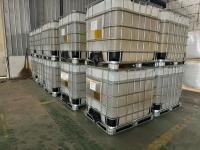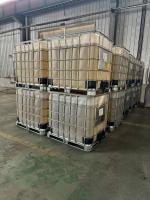Our Products
Product Center / Equivalent model of polyamine(FL2949)can be replaced by Chinafloc-POLYAMINE

Polyamine-based coagulants, such as FL2949, play a central role in the water and wastewater treatment industry. FL2949 is a synthetic, liquid-form polyamine polymer with strong cationic charge density, designed primarily for coagulation and charge neutralization of negatively charged colloidal particles and dissolved organic matter. Its key advantage lies in providing rapid coagulation, reduced sludge generation, and stable performance under a wide range of operating conditions. As part of the polyamine family, FL2949 is versatile and is widely applied in municipal water treatment, industrial effluent clarification, sludge conditioning, oil and gas operations, and paper-making processes.
The following discussion explores the broad applications of polyamine (FL2949) in detail, highlighting its uses, benefits, and relevance in different sectors.
1. Municipal Water Treatment Applications
One of the most important applications of polyamine FL2949 is in municipal drinking water treatment plants. Natural raw water sources often contain turbidity, color, and colloidal impurities such as clay, silt, algae, and humic substances. These negatively charged particles are difficult to remove through sedimentation alone. FL2949 works by neutralizing their charge and forming microflocs that can easily aggregate into larger flocs.
-
Turbidity control: FL2949 improves the removal of suspended solids, producing clearer drinking water.
-
Color removal: It effectively reduces natural organic matter (NOM), tannins, and humic acids that impart undesirable color.
-
Reduction of disinfection by-products (DBPs): By removing NOM, FL2949 indirectly reduces the potential formation of trihalomethanes (THMs) and haloacetic acids during chlorination.
-
Coagulant aid: It can be applied alone or in combination with aluminum- or iron-based coagulants, reducing dosage requirements of inorganic salts and improving sludge handling.
2. Industrial Wastewater Treatment
In industrial wastewater systems, polyamine FL2949 provides significant performance benefits due to its ability to destabilize fine suspended solids and emulsified oils.
-
Textile effluents: Removes dyes and color bodies, which are often negatively charged and resistant to conventional coagulants.
-
Chemical and petrochemical plants: Treats effluents containing emulsified oils, suspended solids, and organic contaminants.
-
Food processing industries: Removes fat, oil, grease (FOG), proteins, and starches from wastewater.
-
Steel and metal finishing industries: Assists in clarifying rinse water containing metallic hydroxides, oils, and pigments.
By enhancing floc formation, FL2949 makes downstream processes such as dissolved air flotation (DAF), sedimentation, and filtration more efficient.
3. Oil and Gas Industry Applications
Polyamine FL2949 is widely employed in oilfield water treatment due to its strong cationic nature. In oil and gas operations, large amounts of produced water must be treated before reuse or discharge.
-
Oil–water separation: Polyamine destabilizes emulsified oil droplets, allowing them to coalesce and be separated more easily.
-
Desalting of crude oil: Used as a demulsifier aid in crude oil desalting processes to break stable water-in-oil emulsions.
-
Produced water treatment: Improves separation efficiency in flotation units, leading to reduced oil carryover and cleaner discharge water.
-
Enhanced water recycling: Supports water reuse in steam flooding, hydraulic fracturing, and reinjection operations.
4. Sludge Treatment and Dewatering
Although cationic polyacrylamides are often used in sludge dewatering, polyamine FL2949 also plays a vital supporting role.
-
Sludge conditioning: It neutralizes charges in biological sludge, allowing subsequent flocculants to work more efficiently.
-
Reduced polymer demand: When used as a pretreatment step, FL2949 lowers the overall consumption of higher-molecular-weight polymers.
-
Improved dewatering: It contributes to denser sludge cakes and reduced water content, thereby lowering disposal costs.
5. Paper and Pulp Industry
Polyamine FL2949 has special applications in the pulp and paper industry as both a process aid and a wastewater treatment agent.
-
Pitch and stickies control: Polyamine helps control deposits of resinous materials, adhesives, and ink residues, improving machine runnability.
-
Wet-end additive: Functions as a retention and drainage aid by neutralizing anionic trash in pulp slurries, improving filler retention and sheet formation.
-
Effluent clarification: Treats colored and suspended solids-rich wastewater streams generated during pulp bleaching and paper making.
6. Mining and Mineral Processing
In mining and mineral beneficiation plants, polyamine FL2949 is occasionally used as a coagulant aid:
-
Enhances clarification of process water containing clays, silts, and fine mineral particles.
-
Improves thickener performance by accelerating solid–liquid separation.
-
Promotes water recycling within the plant, reducing fresh water intake and disposal needs.
7. Environmental and Regulatory Benefits
The application of FL2949 provides several environmental and operational advantages:
-
Lower sludge generation compared to inorganic coagulants like alum or ferric chloride.
-
Easier sludge handling due to denser, more compact flocs.
-
Reduced chemical usage, since polyamines are highly efficient at relatively low dosages.
-
Lower residual metal content in treated water when used as a partial replacement for alum or iron salts.
-
Compliance with discharge regulations, especially in industries required to meet stringent turbidity, color, and oil/grease standards.
Benefits of Polyamine FL2949
-
High cationic charge density, making it effective in destabilizing negatively charged particles.
-
Fast-acting, with rapid floc formation and shorter settling times.
-
Works across a wide pH range, ensuring flexibility in treatment processes.
-
Compatible with other coagulants and flocculants, allowing dosage optimization.
-
Reduces total operating costs by minimizing chemical consumption and sludge disposal expenses.




266_small.jpg)